#Blockchain-Based Applications
Explore tagged Tumblr posts
Text
Explore the future of blockchain with AI and no-code tools. Simplifying development and boosting innovation, this is the new era of decentralized technology.
#AI Algorithms#AI In Blockchain Development#AI-Driven Blockchain Solutions#Blockchain Development#Blockchain Solutions#Blockchain-Based Applications#Cloud-Based Low Code And No-Code Platforms#Implementation Of AI#Integrating AI Solutions#Integration Of AI And No-Code Platforms
0 notes
Text
Embrace the future with AI and no-code platforms revolutionizing blockchain. Learn how these technologies are reshaping the industry and creating endless opportunities.
#AI Algorithms#AI In Blockchain Development#AI-Driven Blockchain Solutions#Blockchain Development#Blockchain Solutions#Blockchain-Based Applications#Cloud-Based Low Code And No-Code Platforms#Implementation Of AI#Integrating AI Solutions#Integration Of AI And No-Code Platforms
0 notes
Text
Unveil the power of AI and no-code platforms in blockchain innovation. Learn how these technologies are revolutionizing the way we interact with digital ledgers.
#AI Algorithms#AI In Blockchain Development#AI-Driven Blockchain Solutions#Blockchain Development#Blockchain Solutions#Blockchain-Based Applications#Cloud-Based Low Code And No-Code Platforms#Implementation Of AI#Integrating AI Solutions#Integration Of AI And No-Code Platforms
0 notes
Text
How Blockchain Technology is Revolutionizing Business Processes
Blockchain technology is rapidly transforming business processes across industries, offering unparalleled security, transparency, and efficiency. From finance to healthcare and beyond, businesses are leveraging blockchain to streamline operations and enhance trust among stakeholders.
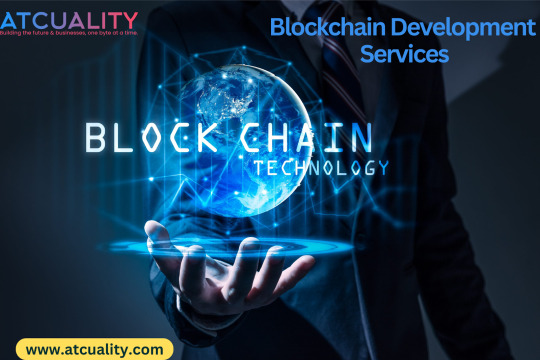
Understanding Blockchain Technology
Blockchain is a decentralized, distributed ledger technology that securely records transactions across multiple computers. Each transaction is stored in a block, which is linked to the previous block, creating a chain of blocks — hence the name blockchain. This ensures that once a transaction is recorded, it cannot be altered or deleted, making blockchain tamper-proof and highly secure.
Applications of Blockchain Technology
Supply Chain Management: Blockchain enables end-to-end traceability of products, enhancing transparency and reducing fraud in supply chains.
Financial Services: Blockchain is revolutionizing traditional banking systems by enabling faster, more secure, and cost-effective transactions.
Smart Contracts: These are self-executing contracts with the terms of the agreement between buyer and seller directly written into lines of code. They automatically execute actions when predefined conditions are met, reducing the need for intermediaries.
Digital Identity: Blockchain provides a secure way to manage digital identities, ensuring data privacy and security.
Healthcare: Blockchain is used to securely store and share patient data, ensuring privacy and interoperability among healthcare providers.
Voting Systems: Blockchain can be used to create secure and transparent voting systems, reducing the risk of fraud and manipulation.
Intellectual Property Protection: Blockchain can help protect intellectual property rights by securely recording ownership and transfer of digital assets.
Choosing the Best Blockchain Developer
When looking for a blockchain developer, it's crucial to consider their experience, expertise, and track record. Look for developers who have worked on similar projects and have a deep understanding of blockchain technology and its applications.
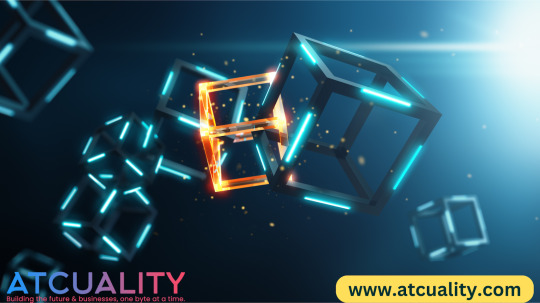
Blockchain Application Development Services
Blockchain development services encompass a range of offerings, including:
Smart Contract Development: Creating and deploying smart contracts tailored to specific business needs.
Blockchain Consulting: Providing expert advice on implementing blockchain technology in business processes.
Blockchain Integration: Integrating blockchain into existing systems and applications.
Blockchain Security Audits: Conducting audits to identify and mitigate security vulnerabilities in blockchain systems.
Blockchain Development Solutions
Blockchain development solutions offer comprehensive tools and platforms for building blockchain applications, such as:
Hyperledger Fabric: A popular framework for building enterprise-grade blockchain applications.
Ethereum: A decentralized platform that enables the development of smart contracts and decentralized applications (DApps).
Ripple: A real-time gross settlement system, currency exchange, and remittance network.
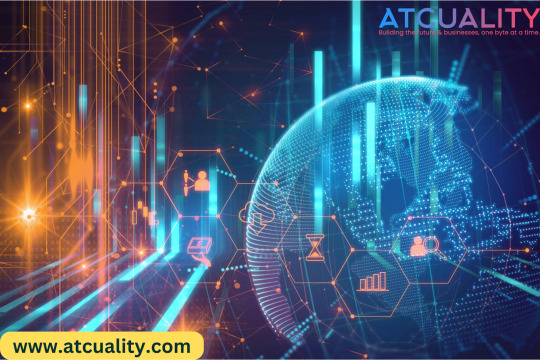
Conclusion
Blockchain technology is revolutionizing business processes by providing secure, transparent, and efficient solutions across industries. Businesses that embrace blockchain today will gain a competitive edge tomorrow, unlocking new opportunities for growth and innovation.
#application of blockchain technology#basics of blockchain technology#best blockchain developer#blockchain application#blockchain application development#blockchain application development services#blockchain application in business#blockchain application projects#blockchain based application development#blockchain development#blockchain development services#blockchain development solutions#blockchain technology and its application#blockchain technology for business
0 notes
Text
6 Game-Changing BIM Trends in 2023

Introduction
In the ever-evolving landscape of the Architecture, Engineering, and Construction (AEC) industry, Building Information Modeling (BIM) continues to play a pivotal role in transforming the way projects are planned, designed, constructed, and managed. As we step into 2023, it's crucial to explore the emerging trends that are set to reshape the AEC sector and push the boundaries of BIM technology. In this blog post, we delve into the in-depth analysis of the BIM trends that are expected to define the industry in 2023.
1. Cloud-Based BIM Collaboration:
One of the most significant trends in 2023 is the increasing adoption of cloud-based BIM collaboration. Cloud technology allows stakeholders to access and collaborate on a centralized BIM model from anywhere in the world, fostering real-time collaboration and improving project efficiency. This trend is driven by the need for seamless communication among project teams, including architects, engineers, contractors, and facility managers.
2. AI and Machine Learning Integration:
The integration of Artificial Intelligence (AI) and Machine Learning (ML) into BIM processes is gaining momentum. In 2023, we can expect to see advanced AI algorithms being used to analyze massive datasets generated by BIM models. This will enable more accurate predictions regarding project timelines, cost estimates, and even potential risks. Machine learning algorithms can also enhance design optimization and automate routine tasks, allowing professionals to focus on more complex and creative aspects of their work.
3. Generative Design and Parametric Modeling:
Generative design, coupled with parametric modeling, is poised to revolutionize the design phase of construction projects. By leveraging algorithms to explore countless design iterations based on predefined parameters, architects and engineers can generate innovative and optimized solutions. This trend not only accelerates the design process but also results in more sustainable and cost-effective structures.
4. Digital Twins for Lifecycle Management:
Digital Twins, virtual replicas of physical assets or systems, are becoming an integral part of BIM workflows. In 2023, we anticipate an increased focus on using Digital Twins for lifecycle management of buildings and infrastructure. From construction to operation and maintenance, Digital Twins provide a holistic view of a project, enabling better decision-making, predictive maintenance, and improved overall performance.
5. Augmented Reality (AR) and Virtual Reality (VR) in BIM:
The convergence of BIM with Augmented Reality (AR) and Virtual Reality (VR) is set to enhance the visualization and communication of construction projects. Stakeholders can experience virtual walkthroughs of a building before it's constructed, identify potential issues, and make informed decisions. This immersive experience not only improves collaboration but also aids in client presentations and stakeholder engagement.
6. Blockchain for Data Security and Collaboration:
As BIM involves the sharing and collaboration of sensitive project data, ensuring its security and integrity is paramount. Blockchain technology is emerging as a solution to address these concerns. In 2023, we expect to see increased adoption of blockchain in BIM processes, providing a decentralized and secure platform for data exchange, version control, and audit trails.
Conclusion
The AEC industry is standing on the precipice of a BIM revolution in 2023. The trends outlined above showcase the industry's commitment to leveraging cutting-edge technologies to enhance collaboration, efficiency, and innovation throughout the project lifecycle. As professionals embrace these trends, they will not only stay competitive in the market but also contribute to the evolution of a more sustainable and technologically advanced AEC sector. Embracing these trends is not just a choice but a necessity for those looking to shape the future of the industry.
At ProtoTech Solutions, Elevate your project management and design processes with customized BIM Application Development Services. From conceptualization to implementation, we craft solutions that seamlessly integrate into your existing systems, providing the AEC industry with the tools needed to excel in a dynamic and competitive landscape.
#BIM Trends in 2023#BIM Trends#AEC Industry#Cloud-Based BIM Collaboration#AI and Machine Learning Integration#Digital Twins#Augmented Reality#Virtual Reality#Blockchain#BIM Application Development
0 notes
Text
#mobile application development#cloud-based development#Blockchain Development#Custom Software Development#Mobile Application Development#Cloud-Based Development
1 note
·
View note
Text


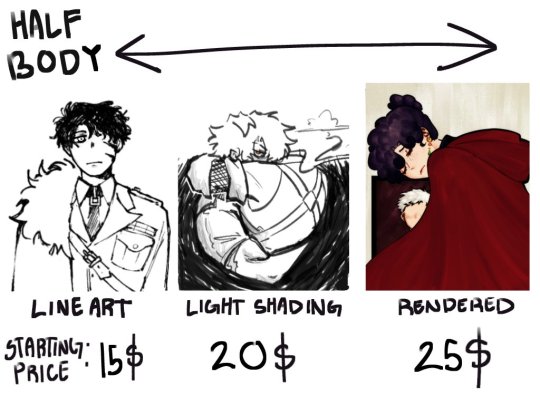
Quick sale till... march? Maybe? Who knows, i'm trying to get verified in Vgen so i'll keep the sale going until i reach that or if there's too many orders
If you'd like more examples of my works, feel free to check the tags commission work, rendered, my art or ask for more in DM’s!
You can either commission me through Vgen or here. I'd appreciate it if its through vgen so i can get verified but if you don't feel like it, shoot me a DM and we can talk there.
Now, read everything below first before commissioning me.
🗐 COMMERCIAL RIGHTS
⚲ IMPORTANT!
Upon commissioning the artist, the client automatically agrees to the terms of service provided, as it is assumed they have read them. If there are any questions or concerns, feel free to reach out through DMs or my other socials.
No additional payments are required for the following, as long as credit is given with my handle "@streamdotpng" whenever used:
✔ Icons, Banners, Thumbnails, and Posts used for streaming or other content purposes.
If the art is used for commercial purposes, with the artist’s consent, the artist will receive an agreed-upon percentage of the sales profits.
✒ GENERAL
The Artist has the right to refuse a commission if they are not comfortable or confident about the request.
The client is allowed to ask for progress updates every 2-4 days and are freely given. If it is a rushed commission, feel free to ask for more frequent updates.
By commissioning the artist, the client acknowledges that the artist is a student and this is not the artist’s full-time job. The client should not expect the artist to treat it as such.
Communications will generally be done in Vgen Chats (Please check your emails for chat notifications). Unless you prefer to communicate in other applications, that is also allowed as long as you let me know. Scroll down to see the end of my Terms of Service for my contacts or check the links in my profile.
Under any circumstances, Clients are not permitted to use any part of the commissioned artwork for non-fungible tokens (NFTs), blockchain, cryptocurrency platforms or AI Training. Such usage is strictly prohibited and may result in legal action taken.
✎ᝰ. CAN, MIGHT & WON’T DRAW!
╰┈➤ CAN DRAW !
Fanart
Shipping [GL, BL, Straight, Yumeship]
Original Characters
PNGtuber Models (e.g Blinking, Speaking)
Character sheets
╰┈➤ MIGHT DRAW ! (We’ll need to talk more about these requests)
Anthropomorphic animals
Heavy Armor
Excessive Gore
Comics
Complicated backgrounds (e.g. Detailed interior, buildings etc)
Honestly, if it isn’t in the "Can Draw" list, let’s talk about it!
╰┈➤✖ WILL NOT DRAW !
Depiction of suicide and self harm
Depiction of any type of hateful/political art
Anything that crosses my personal boundaries
⏱ TIMELINE & WORK PROCESS
Work completion will take at least 1-2 weeks minimum, depending on the amount of commissions worked on.
My work process simplified: Draft and Line Art ➤ Colouring ➤ Final Touches.
My work process expanded on: Draft ➤ Line Art ➤ Flat Colours ➤ Shading ➤ Final Work.
After completing each stage, I will contact you for either payment or revisions and thoughts.
$ PRICING & PAYMENT
Prices vary depending on the commission. I’m flexible, but here are some base prices:
$5-10 USD depending on the background
$10-15 USD per person added
Note: There can be additional charges due to PayPal fees.
Half the payment is expected to be paid upfront Post-Draft or Post-Line Art. The rest of the payment will be paid fully after the Flat Colours are seen and approved. If payment hasn't been received, the Artist will not continue until then.
The option to fully pay upfront is allowed but must be talked about before sending over the money.
No refunds are allowed after the draft has been sent.
You can pay through PAYPAL, KOFI or VGEN
↺ REVISION POLICIES
Once the coloring stage begins, the only major revisions permitted are details that the artist may have missed and was specified by the client while the commission was still in the sketching/lineart stage (e.g. a missing tattoo that’s essential to the character’s design).
If the client is unsatisfied with the commission Post-Line Art, the artist is willing to discuss and make minor edits as stated prior (e.g. adjusting colors). However, the artist will not redraw the piece and expects full payment, as the client should have specified in the sketch stage the changes they wanted to be made.
The client may not hire another artist to adjust the image without the artist’s consent.
The artist is willing to edit the image post commission for the commissioner, but may charge a small fee depending on what is being asked of them
🛈 RUSHED COMMISSIONS
Rush Fees apply. Contact me first to discuss how much you’re willing to pay for the rush fee.
The fastest turnaround time is 1-2 days (maximum 4 days) with the same quality as my usual work.
For short deadlines, you must be responsive when it comes to communication. It'd save us both the headache and worry.
▸ DISCLAIMER!
Breaking or disrespecting the rules of the Terms of Service will lead to a permanent ban and you will be blacklisted. It means, users who break the Terms of Service will lose the rights to commission me.
However, I may allow second chances. Blacklisted users can contact me with proof of improved behavior to request removal.
---
…and that’s about it? Just don’t expect me to be obligated to draw something and we’ll figure something out. Not to mention that depending on how much commissions i’m getting and how busy i am, the art will take atleast a few days to a week!
If you got references, provide them! It’ll help alot. You can also ask for progress updates, just don’t mind me accidentally not seeing the message bc this is tumblr and I don’t get notifs for some reason.
That’s about it, thanks for seeing this yall. Again, If you want to see more examples, simply look at my art tags in my account or send a DM and i'll send some over there.
149 notes
·
View notes
Text
The Emergence of NFTs: Transforming Digital Ownership and Creativity

Non-Fungible Tokens (NFTs) have revolutionized the way we think about digital ownership, art, and collectibles. By leveraging blockchain technology, NFTs provide a way to create, buy, sell, and own unique digital assets with verifiable provenance and scarcity. This article explores the world of NFTs, their impact on various industries, key benefits and challenges, and notable projects, including a brief mention of Sexy Meme Coin.
What Are NFTs?
NFTs, or Non-Fungible Tokens, are unique digital assets that represent ownership of a specific item or piece of content, such as art, music, videos, virtual real estate, and more. Unlike cryptocurrencies like Bitcoin or Ethereum, which are fungible and can be exchanged on a one-to-one basis, NFTs are indivisible and unique. Each NFT is recorded on a blockchain, ensuring transparency, security, and verifiability of ownership.
The Rise of NFTs
NFTs gained mainstream attention in 2021 when digital artist Beeple sold an NFT artwork for $69 million at Christie's auction house. This landmark event highlighted the potential of NFTs to transform the art world by providing artists with new revenue streams and collectors with verifiable digital ownership.
Since then, NFTs have exploded in popularity, with various industries exploring their potential applications. From gaming and music to real estate and fashion, NFTs are creating new opportunities for creators, businesses, and investors.
Key Benefits of NFTs
Digital Ownership: NFTs provide a way to establish true digital ownership of assets. Each NFT is unique and can be traced back to its original creator, ensuring authenticity and provenance. This is particularly valuable in the art and collectibles market, where forgery and fraud are significant concerns.
Monetization for Creators: NFTs enable creators to monetize their digital content directly. Artists, musicians, and other content creators can sell their work as NFTs, earning revenue without relying on intermediaries. Additionally, smart contracts can be programmed to provide creators with royalties each time their NFT is resold, ensuring ongoing income.
Interoperability: NFTs can be used across different platforms and ecosystems, allowing for interoperability in the digital world. For example, NFTs representing in-game items can be traded or used across multiple games and virtual worlds, enhancing their utility and value.
Scarcity and Collectibility: NFTs introduce scarcity into the digital realm by creating limited editions or one-of-a-kind items. This scarcity drives the collectibility of NFTs, similar to physical collectibles like rare coins or trading cards.
Challenges Facing NFTs
Environmental Impact: The creation and trading of NFTs, especially on energy-intensive blockchains like Ethereum, have raised concerns about their environmental impact. Efforts are being made to develop more sustainable blockchain solutions, such as Ethereum's transition to a proof-of-stake consensus mechanism.
Market Volatility: The NFT market is highly speculative and can be volatile. Prices for NFTs can fluctuate significantly based on trends, demand, and market sentiment. This volatility poses risks for both creators and investors.
Intellectual Property Issues: NFTs can raise complex intellectual property issues, particularly when it comes to verifying the rightful owner or creator of the digital content. Ensuring that NFTs are legally compliant and respect intellectual property rights is crucial.
Access and Inclusivity: The high costs associated with minting and purchasing NFTs can limit accessibility for some creators and collectors. Reducing these barriers is essential for fostering a more inclusive NFT ecosystem.
Notable NFT Projects
CryptoPunks: CryptoPunks are one of the earliest and most iconic NFT projects. Created by Larva Labs, CryptoPunks are 10,000 unique 24x24 pixel art characters that have become highly sought-after collectibles.
Bored Ape Yacht Club: Bored Ape Yacht Club (BAYC) is a popular NFT collection featuring 10,000 unique hand-drawn ape avatars. Owners of these NFTs gain access to exclusive events and benefits, creating a strong community around the project.
Decentraland: Decentraland is a virtual world where users can buy, sell, and develop virtual real estate as NFTs. This platform allows for the creation of virtual experiences, games, and social spaces, showcasing the potential of NFTs in the metaverse.
NBA Top Shot: NBA Top Shot is a platform that allows users to buy, sell, and trade officially licensed NBA collectible highlights. These video clips, known as "moments," are sold as NFTs and have become popular among sports fans and collectors.
Sexy Meme Coin (SXYM): Sexy Meme Coin integrates NFTs into its platform, offering a decentralized marketplace where users can buy, sell, and trade memes as NFTs. This unique approach combines humor and finance, adding a distinct flavor to the NFT landscape. Learn more about Sexy Meme Coin at Sexy Meme Coin.
The Future of NFTs
The future of NFTs is bright, with continuous innovation and expanding use cases. As technology advances and more industries explore the potential of NFTs, we can expect to see new applications and opportunities emerge. From virtual fashion and digital identities to decentralized finance (DeFi) and beyond, NFTs are poised to reshape various aspects of our digital lives.
Efforts to address environmental concerns, improve accessibility, and ensure legal compliance will be crucial for the sustainable growth of the NFT ecosystem. Collaboration between creators, platforms, and regulators will help build a more robust and inclusive market.
Conclusion
NFTs have ushered in a new era of digital ownership, creativity, and innovation. By providing verifiable ownership and provenance, NFTs are transforming industries ranging from art and entertainment to gaming and virtual real estate. While challenges remain, the potential benefits of NFTs and their ability to empower creators and engage communities make them a significant force in the digital economy.
For those interested in the playful and innovative side of the NFT market, Sexy Meme Coin offers a unique and entertaining platform. Visit Sexy Meme Coin to explore this exciting project and join the community.
254 notes
·
View notes
Text
So NFTgate has now hit tumblr - I made a thread about it on my twitter, but I'll talk a bit more about it here as well in slightly more detail. It'll be a long one, sorry! Using my degree for something here. This is not intended to sway you in one way or the other - merely to inform so you can make your own decision and so that you aware of this because it will happen again, with many other artists you know.
Let's start at the basics: NFT stands for 'non fungible token', which you should read as 'passcode you can't replicate'. These codes are stored in blocks in what is essentially a huge ledger of records, all chained together - a blockchain. Blockchain is encoded in such a way that you can't edit one block without editing the whole chain, meaning that when the data is validated it comes back 'negative' if it has been tampered with. This makes it a really, really safe method of storing data, and managing access to said data. For example, verifying that a bank account belongs to the person that says that is their bank account.
For most people, the association with NFT's is bitcoin and Bored Ape, and that's honestly fair. The way that used to work - and why it was such a scam - is that you essentially purchased a receipt that said you owned digital space - not the digital space itself. That receipt was the NFT. So, in reality, you did not own any goods, that receipt had no legal grounds, and its value was completely made up and not based on anything. On top of that, these NFTs were purchased almost exclusively with cryptocurrency which at the time used a verifiation method called proof of work, which is terrible for the environment because it requires insane amounts of electricity and computing power to verify. The carbon footprint for NFTs and coins at this time was absolutely insane.
In short, Bored Apes were just a huge tech fad with the intention to make a huge profit regardless of the cost, which resulted in the large market crash late last year. NFTs in this form are without value.
However, NFTs are just tech by itself more than they are some company that uses them. NFTs do have real-life, useful applications, particularly in data storage and verification. Research is being done to see if we can use blockchain to safely store patient data, or use it for bank wire transfers of extremely large amounts. That's cool stuff!
So what exactly is Käärijä doing? Kä is not selling NFTs in the traditional way you might have become familiar with. In this use-case, the NFT is in essence a software key that gives you access to a digital space. For the raffle, the NFT was basically your ticket number. This is a very secure way of doing so, assuring individuality, but also that no one can replicate that code and win through a false method. You are paying for a legimate product - the NFT is your access to that product.
What about the environmental impact in this case? We've thankfully made leaps and bounds in advancing the tech to reduce the carbon footprint as well as general mitigations to avoid expanding it over time. One big thing is shifting from proof of work verification to proof of space or proof of stake verifications, both of which require much less power in order to work. It seems that Kollekt is partnered with Polygon, a company that offers blockchain technology with the intention to become climate positive as soon as possible. Numbers on their site are very promising, they appear to be using proof of stake verification, and all-around appear more interested in the tech than the profits it could offer.
But most importantly: Kollekt does not allow for purchases made with cryptocurrency, and that is the real pisser from an environmental perspective. Cryptocurrency purchases require the most active verification across systems in order to go through - this is what bitcoin mining is, essentially. The fact that this website does not use it means good things in terms of carbon footprint.
But why not use something like Patreon? I can't tell you. My guess is that Patreon is a monthly recurring service and they wanted something one-time. Kollekt is based in Helsinki, and word is that Mikke (who is running this) is friends with folks on the team. These are all contributing factors, I would assume, but that's entirely an assumption and you can't take for fact.
Is this a good thing/bad thing? That I also can't tell you - you have to decide that for yourself. It's not a scam, it's not crypto, just a service that sits on the blockchain. But it does have higher carbon output than a lot of other services do, and its exact nature is not publicly disclosed. This isn't intended to sway you to say one or the other, but merely to give you the proper understanding of what NFTs are as a whole and what they are in this particular case so you can make that decision for yourself.
96 notes
·
View notes
Text

ERC20 Token Generator Introduction
Have you ever thought about creating your own cryptocurrency? With an ERC20 Token Generator , you can make it happen effortlessly. Let’s explore how to dive into the blockchain universe.
Understanding ERC20 Tokens
ERC20 tokens are a type of digital asset on the Ethereum blockchain, following a set standard for compatibility and functionality.
Advantages of ERC20 Tokens:
Consistency: Adheres to a universal protocol.
Broad Adoption: Recognized across various Ethereum-based platforms.
Robust Support: Strong community and resources available.
How to Use an ERC20 Token Generator
Creating tokens is simplified with these tools. Here’s how it works:
Specify Token Details:
Decide on a name and symbol.
Determine the total number of tokens.
Utilize the Generator:
Access an online generator.
Enter your token information.
Deploy Your Token:
Review your settings.
Launch on the Ethereum network.
Features of ERC20 Tokens
ERC20 tokens provide essential features that enhance their usability:
Standard Operations: Includes transferring and checking balances.
Smart Contract Compatibility: Integrates easily with smart contracts.
Security Assurance: Utilizes Ethereum's strong blockchain security.
Reasons to Create an ERC20 Token
Why create your own token? Here are some compelling reasons:
Raise Capital: Launch an ICO for funding.
Build Engagement: Offer rewards to your community.
Drive Innovation: Explore new blockchain applications.
Challenges to Consider
Despite the simplicity, some challenges exist:
Knowledge Requirement: Some blockchain understanding is needed.
Security Concerns: Vulnerabilities can be exploited if not addressed.
Regulatory Compliance: Ensuring adherence to legal standards is vital.
Best Practices for Token Creation
Follow these tips to ensure a successful token launch:
Code Audits: Regularly check for security issues.
Community Involvement: Seek feedback and make necessary adjustments.
Stay Updated: Keep abreast of blockchain trends and legal requirements.
Conclusion
The ERC20 Token Generator empowers you to create and innovate within the crypto space. Whether you're a developer or entrepreneur, it's a powerful tool for blockchain engagement.
Final Thoughts
Embarking on token creation offers a unique opportunity to explore the digital economy and its possibilities.
FAQs
1. What is the purpose of an ERC20 Token Generator?
It’s a tool to create custom tokens on the Ethereum blockchain easily.
2. Do I need technical skills to create a token?
A basic understanding of blockchain helps, but many tools are user-friendly.
3. Can I trade my ERC20 tokens?
Yes, you can trade them on crypto exchanges or directly with users.
4. What costs are involved in token creation?
Creating tokens incurs gas fees on the Ethereum network.
5. How can I ensure my token’s security?
Perform regular audits and follow best practices for security.
Source : https://www.altcoinator.com/
#erc20#erc20 token development company#erc#erc20tokengenerator#token#token generator#token creation#ethereum#bitcoin
59 notes
·
View notes
Text
Unveil the power of AI and no-code platforms in blockchain innovation. Learn how these technologies are revolutionizing the way we interact with digital ledgers.
#AI Algorithms#AI In Blockchain Development#AI-Driven Blockchain Solutions#Blockchain Development#Blockchain Solutions#Blockchain-Based Applications#Cloud-Based Low Code And No-Code Platforms#Implementation Of AI#Integrating AI Solutions#Integration Of AI And No-Code Platforms
0 notes
Text
Discover the power of AI and no-code platforms in blockchain innovation. Learn how these technologies are revolutionizing the way we interact with digital ledgers.
#AI Algorithms#AI In Blockchain Development#AI-Driven Blockchain Solutions#Blockchain Development#Blockchain Solutions#Blockchain-Based Applications#Cloud-Based Low Code And No-Code Platforms#Implementation Of AI#Integrating AI Solutions#Integration Of AI And No-Code Platforms
0 notes
Text
The Four Horsemen of the Digital Apocalypse
Blockchain. Artificial Intelligence. Internet of Things. Big Data.
Do these terms sound familiar? You have probably been hearing some or all of them non stop for years. "They are the future. You don't want to be left behind, do you?"
While these topics, particularly crypto and AI, have been the subject of tech hype bubbles and inescapable on social media, there is actually something deeper and weirder going on if you scratch below the surface.
I am getting ready to apply for my PhD in financial technology, and in the academic business studies literature (Which is barely a science, but sometimes in academia you need to wade into the trash can.) any discussion of digital transformation or the process by which companies adopt IT seem to have a very specific idea about the future of technology, and it's always the same list, that list being, blockchain, AI, IoT, and Big Data. Sometimes the list changes with additions and substitutions, like the metaverse, advanced robotics, or gene editing, but there is this pervasive idea that the future of technology is fixed, and the list includes tech that goes from questionable to outright fraudulent, so where is this pervasive idea in the academic literature that has been bleeding into the wider culture coming from? What the hell is going on?
The answer is, it all comes from one guy. That guy is Klaus Schwab, the head of the World Economic Forum. Now there are a lot of conspiracies about the WEF and I don't really care about them, but the basic facts are it is a think tank that lobbies for sustainable capitalist agendas, and they famously hold a meeting every year where billionaires get together and talk about how bad they feel that they are destroying the planet and promise to do better. I am not here to pass judgement on the WEF. I don't buy into any of the conspiracies, there are plenty of real reasons to criticize them, and I am not going into that.
Basically, Schwab wrote a book titled the Fourth Industrial Revolution. In his model, the first three so-called industrial revolutions are:
1. The industrial revolution we all know about. Factories and mass production basically didn't exist before this. Using steam and water power allowed the transition from hand production to mass production, and accelerated the shift towards capitalism.
2. Electrification, allowing for light and machines for more efficient production lines. Phones for instant long distance communication. It allowed for much faster transfer of information and speed of production in factories.
3. Computing. The Space Age. Computing was introduced for industrial applications in the 50s, meaning previously problems that needed a specific machine engineered to solve them could now be solved in software by writing code, and certain problems would have been too big to solve without computing. Legend has it, Turing convinced the UK government to fund the building of the first computer by promising it could run chemical simulations to improve plastic production. Later, the introduction of home computing and the internet drastically affecting people's lives and their ability to access information.
That's fine, I will give him that. To me, they all represent changes in the means of production and the flow of information, but the Fourth Industrial revolution, Schwab argues, is how the technology of the 21st century is going to revolutionize business and capitalism, the way the first three did before. The technology in question being AI, Blockchain, IoT, and Big Data analytics. Buzzword, Buzzword, Buzzword.
The kicker though? Schwab based the Fourth Industrial revolution on a series of meetings he had, and did not construct it with any academic rigor or evidence. The meetings were with "numerous conversations I have had with business, government and civil society leaders, as well as technology pioneers and young people." (P.10 of the book) Despite apparently having two phds so presumably being capable of research, it seems like he just had a bunch of meetings where the techbros of the mid 2010s fed him a bunch of buzzwords, and got overly excited and wrote a book about it. And now, a generation of academics and researchers have uncritically taken that book as read, filled the business studies academic literature with the idea that these technologies are inevitably the future, and now that is permeating into the wider business ecosystem.
There are plenty of criticisms out there about the fourth industrial revolution as an idea, but I will just give the simplest one that I thought immediately as soon as I heard about the idea. How are any of the technologies listed in the fourth industrial revolution categorically different from computing? Are they actually changing the means of production and flow of information to a comparable degree to the previous revolutions, to such an extent as to be considered a new revolution entirely? The previous so called industrial revolutions were all huge paradigm shifts, and I do not see how a few new weird, questionable, and unreliable applications of computing count as a new paradigm shift.
What benefits will these new technologies actually bring? Who will they benefit? Do the researchers know? Does Schwab know? Does anyone know? I certainly don't, and despite reading a bunch of papers that are treating it as the inevitable future, I have not seen them offering any explanation.
There are plenty of other criticisms, and I found a nice summary from ICT Works here, it is a revolutionary view of history, an elite view of history, is based in great man theory, and most importantly, the fourth industrial revolution is a self fulfilling prophecy. One rich asshole wrote a book about some tech he got excited about, and now a generation are trying to build the world around it. The future is not fixed, we do not need to accept these technologies, and I have to believe a better technological world is possible instead of this capitalist infinite growth tech economy as big tech reckons with its midlife crisis, and how to make the internet sustainable as Apple, Google, Microsoft, Amazon, and Facebook, the most monopolistic and despotic tech companies in the world, are running out of new innovations and new markets to monopolize. The reason the big five are jumping on the fourth industrial revolution buzzwords as hard as they are is because they have run out of real, tangible innovations, and therefore run out of potential to grow.
#ai#artificial intelligence#blockchain#cryptocurrency#fourth industrial revolution#tech#technology#enshittification#anti ai#ai bullshit#world economic forum
32 notes
·
View notes
Text
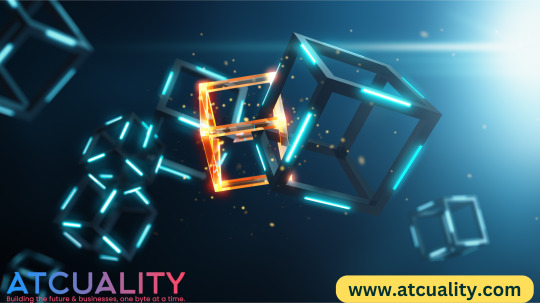
#application of blockchain technology#basics of blockchain technology#best blockchain developer#blockchain application#blockchain application development#blockchain application development services#blockchain application in business#blockchain application projects#blockchain based application development#blockchain development#blockchain development services#blockchain development solutions#blockchain technology and its application#blockchain technology for business
0 notes
Text
From Casinos to Crypto: How Las Vegas Became a Blockchain Innovation Hub

Las Vegas, long synonymous with its iconic casinos and vibrant entertainment, is now emerging as an unexpected hub for blockchain innovation. Inspired by the gaming industry’s need for security, transparency, and enhanced user experiences, the city is becoming a leader in fintech applications powered by blockchain. This transformation is driving the convergence of technology, finance, and entertainment, paving the way for the city’s tech-driven future. Fifteen years ago, in 2010, 10,000 Bitcoin was used to purchase two pizzas, a transaction that marked the first real-world use of the cryptocurrency. At the time, Bitcoin was practically worthless. Fast forward to today, and the value of Bitcoin has skyrocketed. Now, selling just 33 Bitcoin could buy you a $3 million penthouse at the prestigious Four Seasons Private Residences in Las Vegas. This dramatic shift highlights not only Bitcoin’s meteoric rise but also redefining how wealth and assets are exchanged in a tech-driven world.
1. Blockchain Integration in Las Vegas
Resorts World Las Vegas
Resorts World Las Vegas is a prime example of how casinos are embracing blockchain technology and digital currencies.
Crypto Payments: The casino allows customers to use Bitcoin and Ethereum for hotel bookings, dining, and other services, partnering with Gemini, a regulated crypto exchange.
Cashless Gaming: Patrons can use mobile wallets instead of carrying physical cash. This not only enhances convenience but also increases transaction security, reducing risks of theft or fraud.
Wynn Las Vegas
Wynn Las Vegas has partnered with fintech firms to explore blockchain-based loyalty rewards programs. Customers can earn digital tokens tied to casino activities, which can be redeemed for hotel stays, entertainment, or dining experiences.
Case Study: Blockchain for Fair Play
A notable example of blockchain in casinos is FunFair Technologies, a platform that offers decentralized casino solutions using Ethereum smart contracts. While not exclusive to Las Vegas, FunFair’s model ensures provable fairness by publishing game outcomes on the blockchain, making it impossible for casinos to manipulate results.
Such innovations are being tested in Las Vegas-style gaming platforms globally, showing how blockchain can build trust between casinos and players.
Casinos in Las Vegas Accepting Bitcoin for Payments
Golden Gate Hotel & Casino
Location: 1 Fremont Street, Las Vegas, NV 89101
Details: As the oldest casino in Las Vegas, Golden Gate accepts Bitcoin for hotel bookings, dining, and gift shop purchases.
Note: Bitcoin is not accepted for gambling activities but can be converted to U.S. dollars for gaming.
The D Las Vegas Hotel & Casino
Location: 301 Fremont Street, Las Vegas, NV 89101
Details: The D Las Vegas allows Bitcoin payments for hotel rooms, dining, and merchandise at its gift shop.
Note: Bitcoin cannot be used directly for gambling but works for other non-gaming services.
Resorts World Las Vegas
Location: 3000 Las Vegas Blvd S, Las Vegas, NV 89109
Details: Resorts World has partnered with Gemini, a cryptocurrency platform, to accept Bitcoin for hotel stays, dining, and select retail purchases.
Innovation: The resort also offers cashless gaming solutions, making it one of the most tech-forward destinations on the Strip.
2. Fintech Innovations Inspired by Gaming
The gaming industry’s push for seamless, secure, and engaging user experiences has inspired broader fintech applications.
Cashless Gaming Solutions
Casinos like The Venetian and MGM Grand have integrated cashless payment systems. Platforms such as Sightline Payments provide mobile wallets for gaming, dining, and retail, eliminating the need for physical cash.
These systems use fintech innovations like real-time payment settlement and biometric security for user verification, enhancing both speed and safety.
Gamification in Fintech
Gamification—using game-like elements in financial services—draws heavily from the gaming industry’s playbook.
Example: Robinhood: The stock trading app uses gamified features such as streaks, confetti animations, and rewards to engage users.
Las Vegas Influence: Gaming incentives and loyalty programs serve as inspiration for fintech apps offering rewards for saving, spending, or investing responsibly.
Case Study: The Link Between Casinos and Fintech Apps
Las Vegas casinos often deploy advanced AI-powered analytics to predict player behavior and optimize incentives. This same data-driven approach is now being used in fintech apps like Acorns and Stash, which offer personalized financial advice and savings plans based on user habits.
3. Las Vegas-Based Blockchain Gaming Companies
Infinite Games
Las Vegas-based Infinite Games is pioneering blockchain integration in mobile and online gaming:
NFT Ownership: Players can own in-game items as NFTs (non-fungible tokens), enabling trade and resale across different platforms.
Player Economy: By using blockchain, Infinite Games creates decentralized gaming economies where players can monetize their skills and assets.
PLAYSTUDIOS
PLAYSTUDIOS, famous for its loyalty-based mobile games, is exploring blockchain to make rewards more transparent and tradable:
Blockchain allows digital tokens to replace traditional rewards points. Players can transfer, sell, or redeem tokens in ways not previously possible.
Emerging Companies in the Sector
Startups like Decentral Games are pushing the boundaries by creating virtual casinos in the metaverse, powered by blockchain and cryptocurrencies.
Players can visit virtual versions of Las Vegas casinos, bet using digital assets, and enjoy provably fair gameplay.
4. Future Prospects for Blockchain in Las Vegas
Las Vegas’s integration of blockchain technology points toward a future that is both innovative and economically diverse.
Enhanced Security and Transparency
Blockchain creates an immutable ledger for transactions, making gaming and financial processes tamper-proof and transparent.
For example, blockchain is being explored to log all bets, winnings, and payouts, ensuring trust between players and casinos.
Blockchain for Tourism and Hospitality
The Las Vegas tourism industry can leverage blockchain for smart contracts in hotel bookings, event tickets, and tours.
For instance, a blockchain-based booking platform could eliminate intermediaries like OTAs (Online Travel Agencies), offering tourists lower costs and direct transparency.
Economic Diversification
By embracing blockchain technology, Las Vegas is diversifying its economy beyond casinos and entertainment:
Tech Startups: The city’s business-friendly policies are attracting fintech and blockchain startups.
Investors and Talent: Las Vegas is becoming a hub for blockchain conferences like Money 20/20, drawing global investors and tech talent.
Conclusion
Las Vegas’s journey from a global gaming capital to a blockchain innovation hub is a testament to its ability to adapt and evolve. By integrating blockchain into its casino operations, the city is setting new standards for transparency, security, and user engagement in gaming and fintech. From cashless gaming solutions to decentralized casinos, Las Vegas serves as both a case study and a blueprint for other cities looking to harness the power of blockchain.
Platforms like RealOpen are now facilitating real estate purchases using Bitcoin, Ethereum, and other cryptocurrencies. These platforms convert crypto to cash en route to escrow, allowing buyers to purchase any property, even if the seller isn’t crypto-friendly. For example, crypto enthusiasts can test these innovations by using Bitcoin to purchase luxury properties, including a Trump Las Vegas condos for sale. This seamless process allows digital asset holders to invest directly into the Las Vegas real estate market, turning crypto wealth into tangible luxury assets.
As fintech innovations inspired by the gaming industry continue to grow, Las Vegas is uniquely positioned to lead this revolution—solidifying its status not just as the Entertainment Capital of the World, but also as a Tech and Blockchain Capital for the Future.
8 notes
·
View notes
Text
Hire Dedicated Developers in India Smarter with AI
Hire dedicated developers in India smarter and faster with AI-powered solutions. As businesses worldwide turn to software development outsourcing, India remains a top destination for IT talent acquisition. However, finding the right developers can be challenging due to skill evaluation, remote team management, and hiring efficiency concerns. Fortunately, AI recruitment tools are revolutionizing the hiring process, making it seamless and effective.
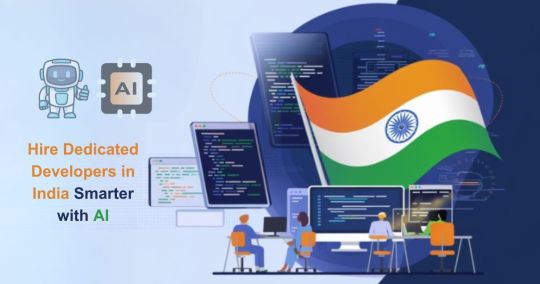
In this blog, I will explore how AI-powered developer hiring is transforming the recruitment landscape and how businesses can leverage these tools to build top-notch offshore development teams.
Why Hire Dedicated Developers in India?
1) Cost-Effective Without Compromising Quality:
Hiring dedicated developers in India can reduce costs by up to 60% compared to hiring in the U.S., Europe, or Australia. This makes it a cost-effective solution for businesses seeking high-quality IT staffing solutions in India.
2) Access to a Vast Talent Pool:
India has a massive talent pool with millions of software engineers proficient in AI, blockchain, cloud computing, and other emerging technologies. This ensures companies can find dedicated software developers in India for any project requirement.
3) Time-Zone Advantage for 24/7 Productivity:
Indian developers work across different time zones, allowing continuous development cycles. This enhances productivity and ensures faster project completion.
4) Expertise in Emerging Technologies:
Indian developers are highly skilled in cutting-edge fields like AI, IoT, and cloud computing, making them invaluable for innovative projects.
Challenges in Hiring Dedicated Developers in India
1) Finding the Right Talent Efficiently:
Sorting through thousands of applications manually is time-consuming. AI-powered recruitment tools streamline the process by filtering candidates based on skill match and experience.
2) Evaluating Technical and Soft Skills:
Traditional hiring struggles to assess real-world coding abilities and soft skills like teamwork and communication. AI-driven hiring processes include coding assessments and behavioral analysis for better decision-making.
3) Overcoming Language and Cultural Barriers:
AI in HR and recruitment helps evaluate language proficiency and cultural adaptability, ensuring smooth collaboration within offshore development teams.
4) Managing Remote Teams Effectively:
AI-driven remote work management tools help businesses track performance, manage tasks, and ensure accountability.
How AI is Transforming Developer Hiring
1. AI-Powered Candidate Screening:
AI recruitment tools use resume parsing, skill-matching algorithms, and machine learning to shortlist the best candidates quickly.
2. AI-Driven Coding Assessments:
Developer assessment tools conduct real-time coding challenges to evaluate technical expertise, code efficiency, and problem-solving skills.
3. AI Chatbots for Initial Interviews:
AI chatbots handle initial screenings, assessing technical knowledge, communication skills, and cultural fit before human intervention.
4. Predictive Analytics for Hiring Success:
AI analyzes past hiring data and candidate work history to predict long-term success, improving recruitment accuracy.
5. AI in Background Verification:
AI-powered background checks ensure candidate authenticity, education verification, and fraud detection, reducing hiring risks.
Steps to Hire Dedicated Developers in India Smarter with AI
1. Define Job Roles and Key Skill Requirements:
Outline essential technical skills, experience levels, and project expectations to streamline recruitment.
2. Use AI-Based Hiring Platforms:
Leverage best AI hiring platforms like LinkedIn Talent Insightsand HireVue to source top developers.
3. Implement AI-Driven Skill Assessments:
AI-powered recruitment processes use coding tests and behavioral evaluations to assess real-world problem-solving abilities.
4. Conduct AI-Powered Video Interviews:
AI-driven interview tools analyze body language, sentiment, and communication skills for improved hiring accuracy.
5. Optimize Team Collaboration with AI Tools:
Remote work management tools like Trello, Asana, and Jira enhance productivity and ensure smooth collaboration.
Top AI-Powered Hiring Tools for Businesses
LinkedIn Talent Insights — AI-driven talent analytics
HackerRank — AI-powered coding assessments
HireVue — AI-driven video interview analysis
Pymetrics — AI-based behavioral and cognitive assessments
X0PA AI — AI-driven talent acquisition platform
Best Practices for Managing AI-Hired Developers in India
1. Establish Clear Communication Channels:
Use collaboration tools like Slack, Microsoft Teams, and Zoom for seamless communication.
2. Leverage AI-Driven Productivity Tracking:
Monitor performance using AI-powered tracking tools like Time Doctor and Hubstaff to optimize workflows.
3. Encourage Continuous Learning and Upskilling:
Provide access to AI-driven learning platforms like Coursera and Udemy to keep developers updated on industry trends.
4. Foster Cultural Alignment and Team Bonding:
Organize virtual team-building activities to enhance collaboration and engagement.
Future of AI in Developer Hiring
1) AI-Driven Automation for Faster Hiring:
AI will continue automating tedious recruitment tasks, improving efficiency and candidate experience.
2) AI and Blockchain for Transparent Recruitment:
Integrating AI with blockchain will enhance candidate verification and data security for trustworthy hiring processes.
3) AI’s Role in Enhancing Remote Work Efficiency:
AI-powered analytics and automation will further improve productivity within offshore development teams.
Conclusion:
AI revolutionizes the hiring of dedicated developers in India by automating candidate screening, coding assessments, and interview analysis. Businesses can leverage AI-powered tools to efficiently find, evaluate, and manage top-tier offshore developers, ensuring cost-effective and high-quality software development outsourcing.
Ready to hire dedicated developers in India using AI? iQlance offers cutting-edge AI-powered hiring solutions to help you find the best talent quickly and efficiently. Get in touch today!
#AI#iqlance#hire#india#hirededicatreddevelopersinIndiawithAI#hirededicateddevelopersinindia#aipoweredhiringinindia#bestaihiringtoolsfordevelopers#offshoresoftwaredevelopmentindia#remotedeveloperhiringwithai#costeffectivedeveloperhiringindia#aidrivenrecruitmentforitcompanies#dedicatedsoftwaredevelopersindia#smarthiringwithaiinindia#aipowereddeveloperscreening
5 notes
·
View notes